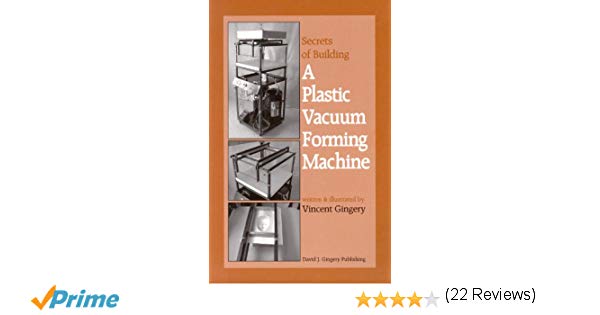Vacuum forming works well for making things out of thin sheets of plastic (see “Kitchen Floor Vacuum Former,” Make: Volume 11). I considered making a 3D printer, but for the few plastic parts I envisioned needing, it wasn’t worth the time and money.
I was ready for my first test. I grabbed some random objects and arranged them on the platen.
I was using some Sintra plastic (expanded PVC) for my vacuum forming I had left over from a few years ago. I think it's about 2-3mm thick. I clamped it inside the frame and heated it up with my heat gun for a few minutes until the whole piece was very flexible. (While writing this Instructable, I also learned that Sintra can be softened by submerging it in boiling water for 10 to 15 seconds, which seems like it would heat it more evenly).
When the Sintra is fully heated, turn on the vacuum cleaner and place the plastic over your objects onto the platen. The plastic will stretch as it lays over the objects; when the frame touches the platen and creates a seal, the vacuum will be able to suck the plastic tightly over the pieces. Make sure to bring the frame straight down rather than from the side, or you may stretch parts of the plastic and cause it to tear.
I found if the plastic does not pull as tightly over some parts as you would like (either because the plastic was not heated enough in that spot, or because the vacuum is not strong enough), you can heat it up some more with the heat gun as the vacuum is still running. With plastic as thin as I was using, it was really easy to burn holes through the plastic if I heated up a spot for just a split second too long.
I was using some Sintra plastic (expanded PVC) for my vacuum forming I had left over from a few years ago. I think it's about 2-3mm thick. I clamped it inside the frame and heated it up with my heat gun for a few minutes until the whole piece was very flexible. (While writing this Instructable, I also learned that Sintra can be softened by submerging it in boiling water for 10 to 15 seconds, which seems like it would heat it more evenly).
When the Sintra is fully heated, turn on the vacuum cleaner and place the plastic over your objects onto the platen. The plastic will stretch as it lays over the objects; when the frame touches the platen and creates a seal, the vacuum will be able to suck the plastic tightly over the pieces. Make sure to bring the frame straight down rather than from the side, or you may stretch parts of the plastic and cause it to tear.
I found if the plastic does not pull as tightly over some parts as you would like (either because the plastic was not heated enough in that spot, or because the vacuum is not strong enough), you can heat it up some more with the heat gun as the vacuum is still running. With plastic as thin as I was using, it was really easy to burn holes through the plastic if I heated up a spot for just a split second too long.

'Hobbyist' Vacuum Forming Machine Plans
Hobby Vac vacuum forming machine
Plans for a tabletop vacuum forming machine that can mold flat plastic sheets into complex shapes using heat and vacuum. This versatile machine was designed to be an easy 2 or 3 weekend project using ordinary parts and a wood cabinet. It features a built in 110 volt oven and powerful vacuum system. This is the largest size you can run on a residential house circuit.
This little powerhouse can form up to 1/4 inch thick plastic sheets. The sheet size is 12 x18 inches or smaller and depth of draw is up to 6 inches. You get Industrial strength performance and a perfect size for the hobbyist or small business.
